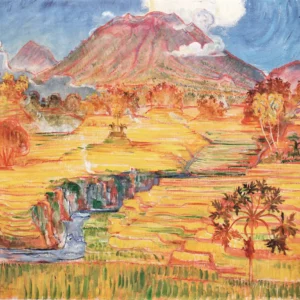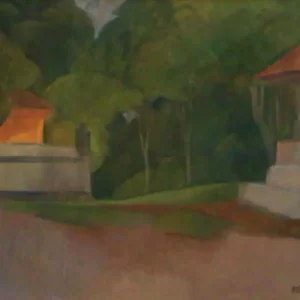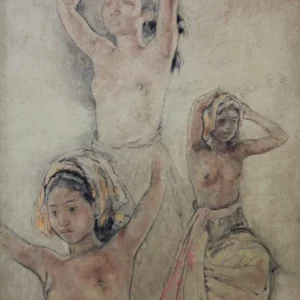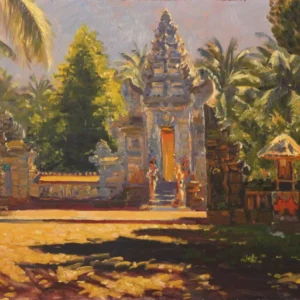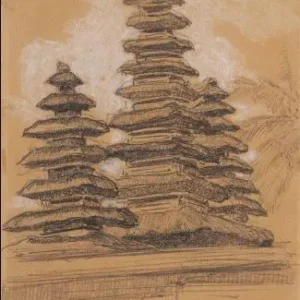Born in Switzerland in 1908, Theo Meier (Meijer) studied art in Germany. Among his teachers was Otto Dix – an artist celebrated for his images of harsh reality in Weimar Republic and atrocities of war. But Meier fell under the spell of Paul Gaugin’s exotic, symbolic and decorative images motivated by visual splendour and rich colours found in the distant Pacific islands. So inspired, Meier went to Tahiti in 1932 and subsequently to Bali where he lived from 1934 to 1955. He claimed that Bali shaped him as an artist and a person. He showed a predilection for mysticism in life and beauty in art – often alluding to Gaugin’s bold and synthetic style. He painted the scenes of everyday life, with his favoured markets, sacred temples, marvellous landscapes and beautiful Balinese woman. In the 1930s Meier witnessed the blossom of Pre-war Balinese Modernist art and, in some ways participated in this movement. He became a patron of some Balinese artists and a collector of their works, but also a subject in various paintings and drawings, especially by Ida Bagus Nyoman Rai, with whom he developed close relationship. Before and after the war Meier maintained contact with other ‘Western’ artists living in Bali, including Walter Spies, Jean Le Mayeur, Emilio Ambron, Rudolf Bonnet, Antonio Blanco and Donald Friend. In 1938 the Australian Museum purchased ten Balinese artefacts from Theo Meier. This small collection that includes 6 wooden carvings, 2 votive tablets and 2 textiles, shows our slowly growing interest in Balinese culture. In 2012, thanks to a generous donation of over 100 paintings by Leo Haks – a collector and connoisseur of Balinese art, the Australian Museum acquired nearly 30 Pre-war Balinese Modernist paintings and drawings from the original Theo Meier’s collection. Leo Haks’ donation also includes over 50 paintings of the same artistic current from the original collection of Margaret Mead and Gregory Bateson – an American and a British anthropologist respectively.
Showing the single result


